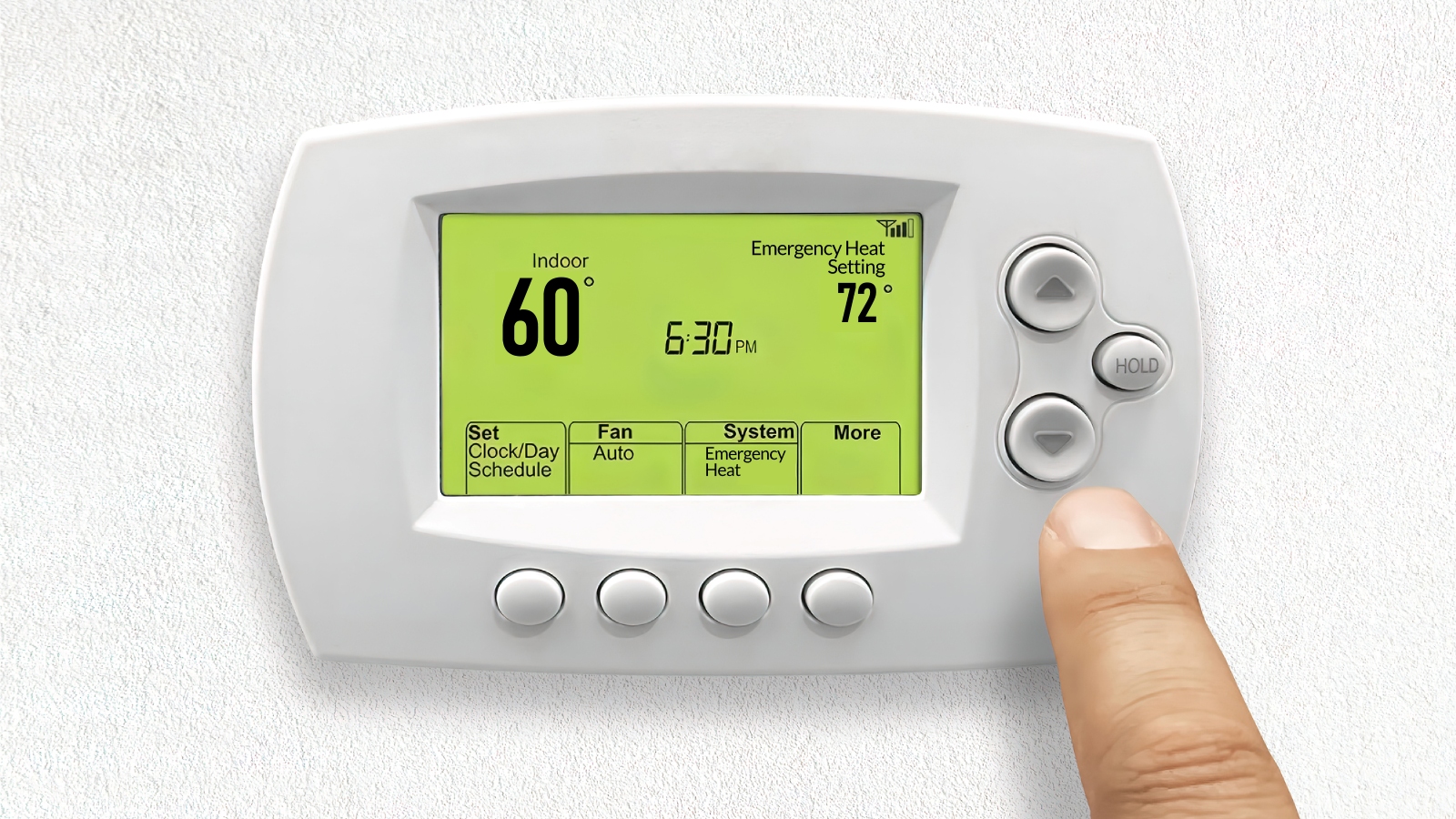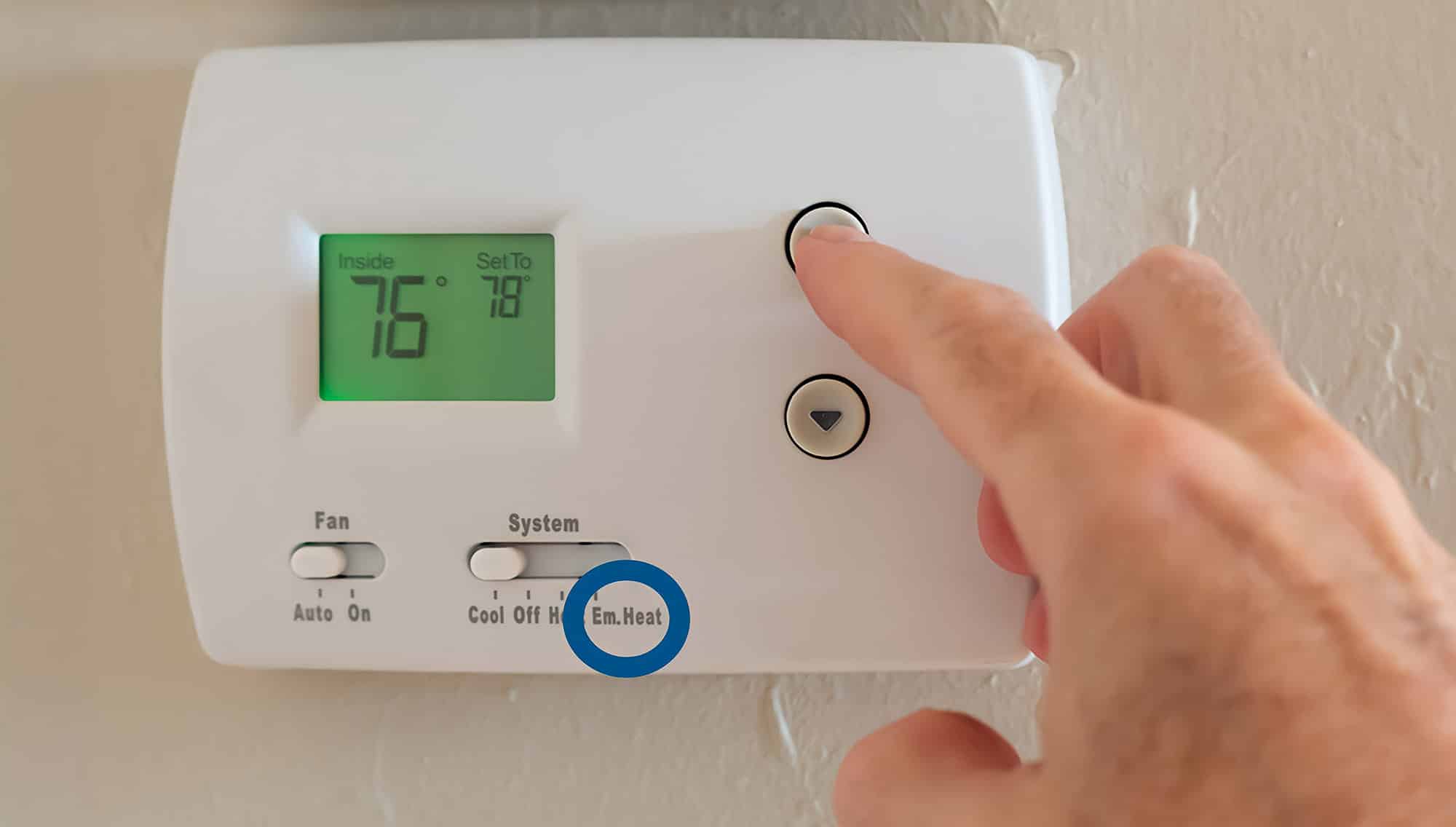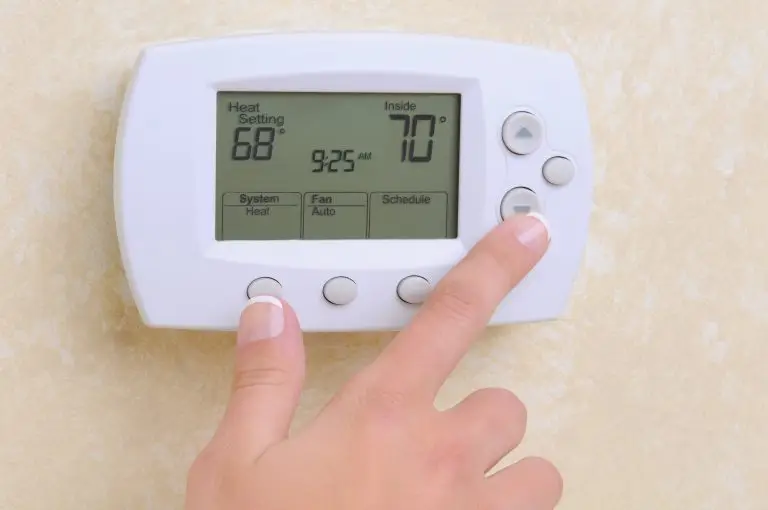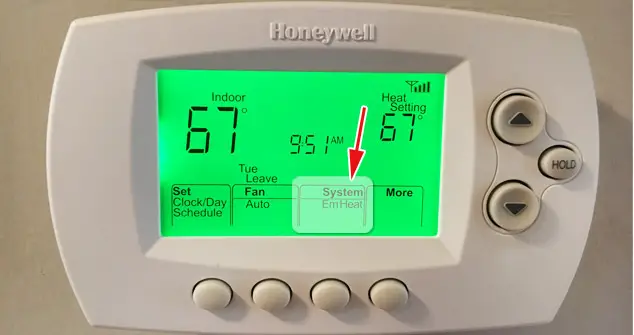Check Best Thermostat Pricing in Amazon
** As an Amazon Associate, I earn from qualifying purchases.
Emergency heat on a thermostat is a backup heating system. It activates when your main heat pump fails or can’t keep up.
Imagine your heat pump breaks during a cold snap. That’s when the emergency heat setting steps in. This feature is vital for maintaining warmth in your home. It uses electric resistance heating or a furnace to generate heat. This system ensures you stay comfortable even in extreme conditions.
Understanding how and when to use emergency heat can save you from freezing temperatures and high energy bills. Let’s explore how this crucial feature works and why it’s essential for your home’s heating system.
Introduction To Emergency Heat
Have you ever wondered what that “Emergency Heat” setting on your thermostat is for? If you’ve ever been curious, you’re not alone. Many people see it but aren’t sure when or why to use it. Let’s break it down, starting with an introduction to emergency heat.
Definition
Emergency heat is a secondary heating option on your thermostat. It kicks in when your primary heating system can’t keep up with extreme cold. Essentially, it’s your backup plan to ensure your home stays warm.
Purpose
The main purpose of emergency heat is to provide an additional heat source during very cold weather. Imagine your heat pump isn’t working effectively due to freezing temperatures. Emergency heat can step in to provide warmth when you need it most.
Think of it as a safety net. You might not use it often, but it’s there for those unexpected chilly nights. Have you ever experienced a sudden drop in temperature and your regular heating just couldn’t keep up? That’s when emergency heat becomes your best friend.
Now, here’s a quick tip: use emergency heat sparingly. It typically consumes more energy and can be costly. So, reserve it for those truly cold days when your main system is struggling.
Ever noticed your energy bills spiking during a cold snap? It could be due to frequent use of emergency heat. Being mindful of its purpose and usage can help manage your energy costs effectively.
Have you checked your thermostat settings lately? Next time you do, remember what that emergency heat setting is for and use it wisely. Your wallet will thank you.

Credit: charlottecomfortsystems.com
How Emergency Heat Works
Understanding how emergency heat works on a thermostat is crucial for homeowners. This feature can provide an essential backup during cold weather. Let’s dive into the specifics of how emergency heat functions.
Activation Process
The activation process of emergency heat is straightforward. When the primary heating system fails, you manually switch on the emergency heat. This setting overrides the usual heating method. It ensures that your home stays warm even if the main system is down. You will find the emergency heat switch on your thermostat. It’s often labeled as “EM Heat” or “Emergency Heat”.
System Components
Several key components work together in emergency heat mode. First, the thermostat sends a signal to the heating unit. This activates the secondary heating source. Usually, this source is electric resistance heating. It can also be a gas furnace. The system also includes a heat pump. This pump usually works with the primary heat. But in emergency mode, the secondary heat takes over completely.
The electric resistance coils or gas furnace then generate heat. This heat distributes through your home’s ductwork. It ensures consistent warmth during emergencies. Understanding these components helps you appreciate the backup system in place.
When To Use Emergency Heat
Emergency heat on a thermostat is a crucial feature for cold weather. Knowing when to use it ensures your home stays warm and safe. This feature is particularly useful in specific situations. Let’s explore when to use emergency heat.
Cold Weather
During extremely cold weather, your heat pump might struggle. It works harder to maintain a comfortable temperature. If the temperature drops significantly, the heat pump may not keep up. This is when you should switch to emergency heat. It provides extra warmth when needed most. This backup system ensures your home stays cozy.
Heat Pump Malfunction
If your heat pump malfunctions, emergency heat is essential. It acts as a backup heating source. A malfunction can leave your home cold and uncomfortable. Switching to emergency heat keeps the temperature stable. This feature gives you peace of mind until repairs are made. It’s vital for maintaining a warm and safe environment.

Credit: www.watkinsheating.com
Pros And Cons
Emergency heat on a thermostat provides a backup heating option during cold weather. It can be costly but ensures warmth when needed. Ideal for emergencies.
When it comes to emergency heat on your thermostat, understanding the pros and cons can help you make informed decisions during the colder months. Emergency heat serves as a backup heating system when your primary heat pump fails or struggles to keep up with the cold. Let’s dive into the advantages and disadvantages of using emergency heat.Advantages
Emergency heat can be a lifesaver in freezing temperatures. It activates immediately to provide warmth when your heat pump can’t keep up. This feature is especially useful during unexpected cold snaps or if your heat pump needs repairs. Another advantage is its simplicity. You don’t need to fuss with complicated settings. Just switch it on and you’re good to go. Lastly, emergency heat is often compatible with most modern thermostats, making it a convenient option for many homes.Disadvantages
On the flip side, using emergency heat can be costly. It relies on electric resistance heating, which can drive up your energy bills quickly. It’s also not as efficient as your primary heat pump. This means your home may not heat as evenly or comfortably. Extended use of emergency heat can put a strain on your HVAC system. This could lead to more frequent repairs and maintenance. Finally, relying too much on emergency heat can mask underlying issues with your heat pump. It’s crucial to address any mechanical problems promptly. Do you know how often you use emergency heat? Is it worth the cost for you? These are important questions to consider as you manage your home’s heating system.Common Misconceptions
When it comes to home heating, emergency heat is a term that often causes confusion. Many homeowners misunderstand how and when to use it. Let’s clear up some of these common misconceptions.
Myths
One common myth is that emergency heat is a faster way to warm up your home. This is not true. Emergency heat actually uses more energy and is less efficient than your regular heating system. Another misconception is that you should switch to emergency heat whenever the weather gets cold. This can lead to unnecessarily high energy bills.
Clarifications
Emergency heat is designed to be a backup. It should only be used if your heat pump fails. Think of it as a safety net, not your go-to option. It’s also important to know that emergency heat won’t produce heat any quicker than your regular system. Its main job is to keep your home warm in case of an emergency.
To put it simply, use your regular thermostat settings for day-to-day warmth. Reserve emergency heat for true emergencies. This will keep your home comfortable and your energy bills manageable.
Energy Efficiency Considerations
Energy efficiency plays a crucial role in maintaining an eco-friendly home. Emergency heat on a thermostat can impact energy usage significantly. Understanding these considerations is vital. It helps in making informed decisions about your heating system.
Cost Implications
Emergency heat often uses more energy than regular heating modes. This results in higher utility bills. The system relies on electric resistance heating. This method is less efficient and more costly. Frequent use of emergency heat can strain your budget.
Check Best Thermostat Pricing in Amazon
** As an Amazon Associate, I earn from qualifying purchases.
Energy Usage
Emergency heat consumes more power to maintain warmth. It bypasses the heat pump’s efficiency. This leads to increased energy consumption. Prolonged use can affect overall energy efficiency. It can also contribute to higher carbon footprints.
Maintenance Tips
Emergency heat on a thermostat can be a lifesaver during those cold winter months. To ensure it works efficiently when you need it the most, regular maintenance is crucial. Let’s dive into some key maintenance tips to keep your emergency heat in top shape.
Regular Checks
One of the simplest yet most effective ways to maintain your emergency heat is by performing regular checks. Set a reminder to inspect your thermostat at least once a month. Look for any signs of wear and tear or unusual behavior.
Make sure the settings haven’t been accidentally changed. I once found my thermostat set to “cool” in the middle of winter! Such simple checks can save you from a cold surprise.
Also, ensure that the thermostat is free from dust and debris. This can affect its performance. A quick wipe with a soft cloth can do wonders.
Professional Servicing
While regular checks are essential, don’t skip professional servicing. Schedule an annual inspection with a certified HVAC technician. They can identify issues that you might overlook.
Professionals have the tools and expertise to perform a thorough checkup. They can test the emergency heat function and make necessary adjustments.
Investing in professional servicing can extend the life of your thermostat. It also ensures that your heating system runs efficiently, saving you money in the long run.
What other maintenance tips have you found useful for your thermostat? Share your experiences in the comments below!
Troubleshooting Emergency Heat Issues
Having issues with your thermostat’s emergency heat setting can be a frustrating experience, especially during the colder months. Whether you’re a seasoned homeowner or a first-time user, troubleshooting these problems can sometimes be daunting. Here, we’ll dive into common problems and solutions to get your emergency heat back on track.
Common Problems
Emergency heat not turning on? This can be due to several reasons. One common issue is a malfunctioning thermostat. If the display is blank, it might be a power problem.
Sometimes, the issue lies with the heat pump itself. If it’s not working properly, the emergency heat mode might fail to activate.
Another frequent problem is with the wiring. Faulty or loose connections can disrupt the proper functioning of your emergency heat setting.
Solutions
First, check the thermostat’s power source. Make sure it’s properly connected and receiving power. If the display is still blank, try replacing the batteries.
If the thermostat is working fine, inspect the heat pump. Listen for unusual noises or check if the outdoor unit is covered in ice. These could be signs of a malfunction.
Finally, examine the wiring. Tighten any loose connections and replace any damaged wires. If you’re not comfortable doing this, calling a professional is a good idea.
Have you ever faced issues with your emergency heat? What steps did you take? Share your experiences in the comments!

Credit: craigheadelectric.coop
Frequently Asked Questions
Is It Okay To Run Emergency Heat?
Yes, running emergency heat is okay, but use it only when necessary. It consumes more energy and increases costs.
When Should I Set My Thermostat To Emergency Heat?
Set your thermostat to emergency heat when your heat pump isn’t working or during extremely cold weather. This ensures your home stays warm.
What Is The Difference Between Heat And Emergency Heat?
Heat is the regular heating mode. Emergency heat is a backup heating mode used when the primary system fails.
Does Running Your Emergency Heat Cost More?
Yes, running emergency heat typically costs more. It uses more electricity compared to regular heating. Emergency heat relies on electric resistance heating, which is less efficient. Regular heating systems are more cost-effective for maintaining warmth.
Conclusion
Emergency heat on a thermostat is crucial during extreme cold. It provides warmth when the primary heating system fails. Understanding its function can help you stay comfortable and safe. Remember to use emergency heat sparingly. It consumes more energy and can increase your bills.
Regular maintenance of your heating system avoids reliance on emergency heat. Always consult your thermostat’s manual for specific instructions. Stay warm and prepared during winter months. Proper knowledge ensures efficient and effective use of emergency heat.
Check Best Thermostat Pricing in Amazon
** As an Amazon Associate, I earn from qualifying purchases.


